mmcartalk
Expert
- Messages
- 4,159
- Reactions
- 2,675
MM Retro Write-Up: First-Generation VW Microbus (Type 2)

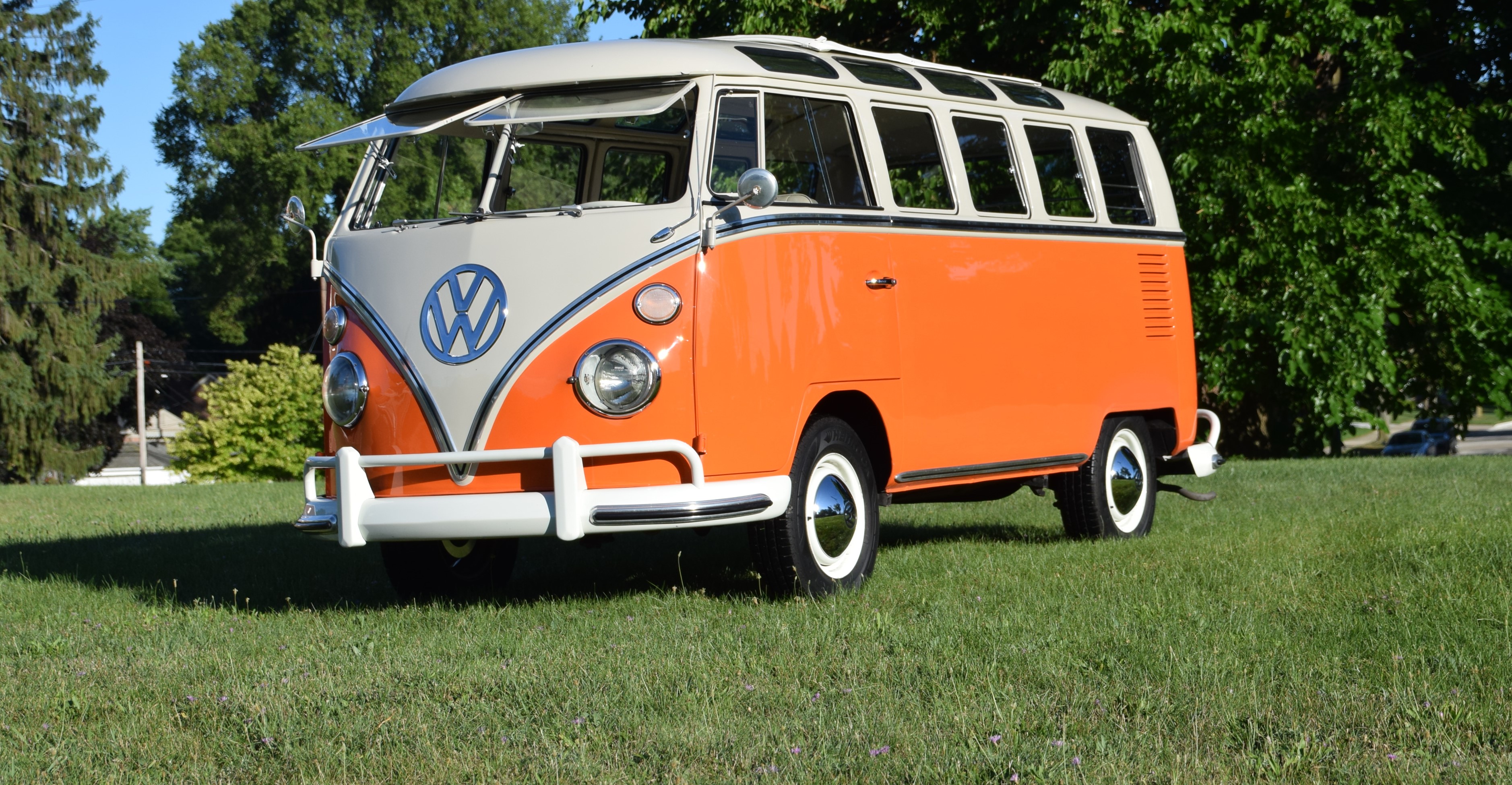

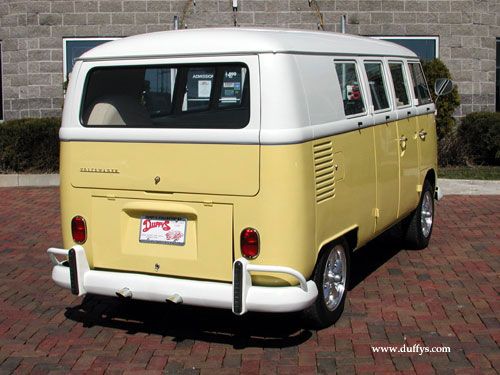
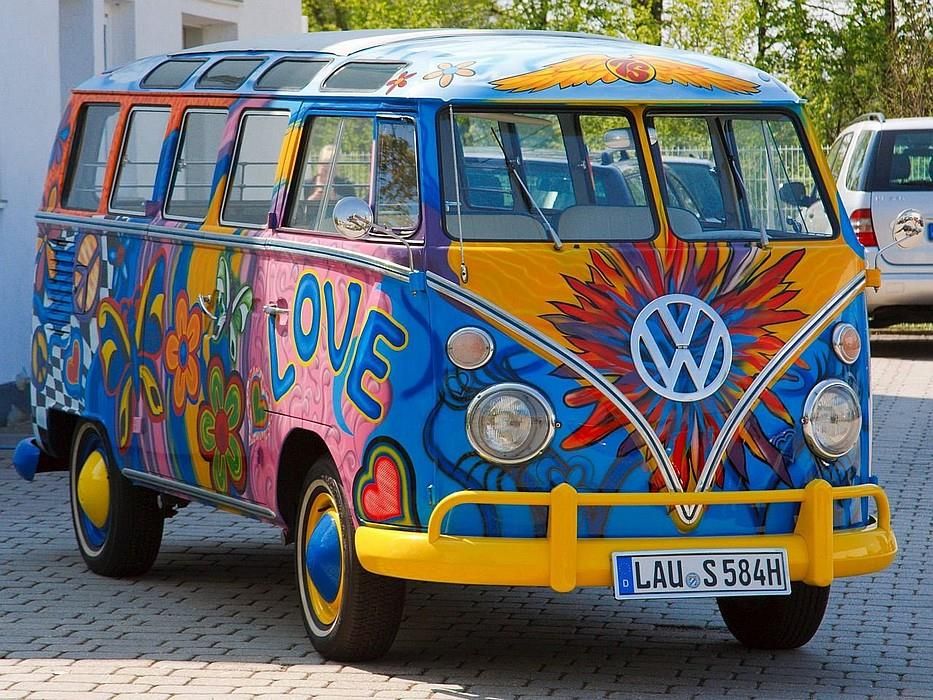

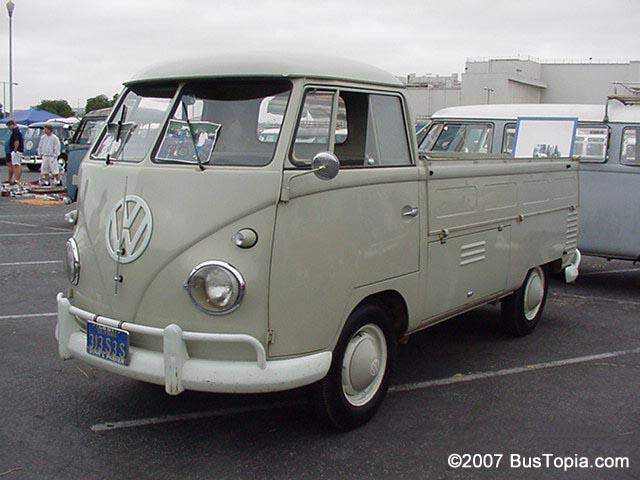
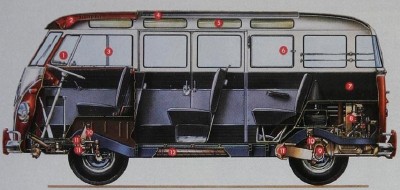
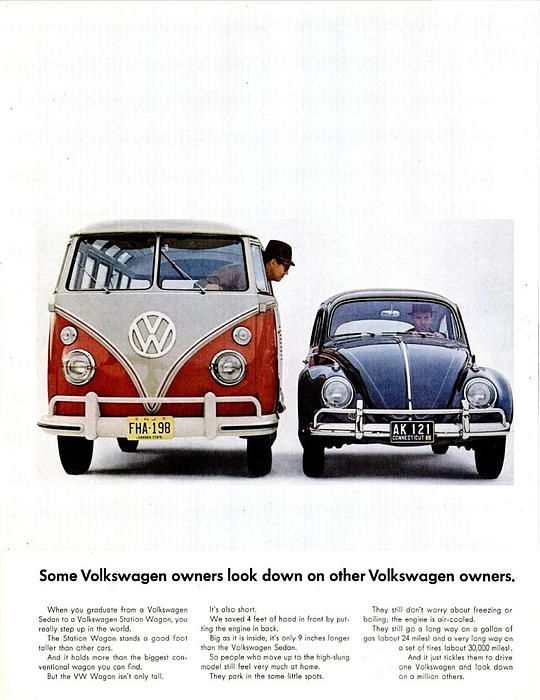
IN A NUTSHELL: The TRUE original minivan...but it had many quirks.
Automotive historians (correctly) attribute the birth of front-engine/FWD minivans to the Plymouth/Dodge Voyager/Caravan, debuting in the fall of 1983 for the 1984 model-year....and it took competitors years to catch up and come out with front-drive versions of their own. But the Voyager/Caravan twins were not the first compact-to-mid-sized people-movers in production by any means. In the 1960s, decades before the FWD Chrysler twins were introduced, Chevrolet was producing the small, Corvair-based Greenbriar van, with its air-cooled rear engine and rear-drive. The similar-sized but front/engine/rear-drive Econline, which was Falcon-based, was produced by Ford around the same time. Dodge itself sold the A-100, which, mechanically, was more or less similar to the Ford Econoline. And front-engined/rear-wheel drive vans and people-movers were being produced by Japanese manufacturers in their home market.
But it was the famous Volkswagen air-cooled Type 2, dating to the fall of 1949 as a 1950 model (the first-generation version was in production until the late 1960s) that first introduced the concept of a box-shaped, Small-on-the-Outside/Large-on-the-Inside people-mover. Over the years (though officially the Type 2), it was called a variety of names and nicknames, including Kombi, Transporter, Microbus, Vanagon, and (sarcastically, in the U.S.), Hippie-Bus, for its association with the Counterculture (more on that role later).
I can (vaguely) remember first seeing them in the mid-late 1950s, when my late Father, in the Army, was based in Brussels, Belgium. I was born and raised Catholic, and, at the time, as a young boy, I can remember that the local nuns there in Brussels used to ride around in them. Later, as I grew older and learned more abut vehicles, I could understand why this vehicle was so popular in convents....driving one or riding in one, it was probably the perfect vehicle for self-denial, public penance, and the ascetic life.
To understand why, one must look at its design, which was classically Spartan and underpowered even for the times. It was essentially a bare, large-inside-volume box, designed to carry up to eight adults, with the same tiny air-cooled power plant found in the much smaller VW Beetle coupe. Initial versions had (get this) only 24 HP, and, even as late as the late 1960s, was still only 54 HP. With this kind of (non) power in a large, heavy box with the aerodynamics of a brick, 0-60 times weren't even measured because, in many wind/road/vehicle-load conditions, 60 MPH was simply not possible. Acceleration, even unloaded, made a snail look quick in comparison. The noisy, air-cooled engine, together with minimal sound-insulation, constantly chuffled away....more so in back than up front. Up front, in the driver's seat, the large, bus-type, horizontally-angled steering wheel was (being facetious) about an inch away from the front windshield, with no seat belts in early versions.....and there was nothing in front of you (and impact with other vehicles) except a pane of glass (non-safety-glass in early versions) and the front pane of sheet metal and headlights. You pushed the accelerator/clutch/brake pedals down instead of forward, and reached down to a LONG and wobbly shift-lever coming up from the floor....and a similarly-long parking brake lever. Because the engine was so tiny, made little heat, was air-cooled, and had such an enormous area to try and heat up inside in cold weather or for defrost, these functions were essentially useless.....even more so than the much smaller Beetle interiors. In cold weather, you simply wore winter clothes in these vehicles if you wanted to stay even reasonably comfortable, and wiped the glass off in front of you with a towel (if not frozen) so you could see. I'm not sure, but I think that later versions might (?) have had a optional auxiliary gas-powered heater inside like some early Corvairs, but those gas-heaters could be dangerous. Air-conditioning? LOL....flip the hinged-windows open. With next to no power, a large slab-side body, nonexistent aerodynamics, and what little weight there was in the engine/transmission all the way in the back over the rear wheels (engine-access was through a small hinged-cover under the hatch-lid), driving one of these things pretty much put you at the mercy the wind. With almost no weight up front, this vehicle had the tracking-stability of a drunk on New Year's Eve....almost any crosswind would blow you all over your lane, and a headwind would make the tiny engine struggle even harder. I suspect that the nuns learned to pray for tailwinds. The high center of gravity meant unstable handling, particularly with the Beetle/Corvair type swing-axle suspension on the earlier models, which, under severe conditions, could allow underside tire tuck-in.
Yet, with all of its quirks/eccentricities, this vehicle had some good and noteworthy features as well. Typical of German-built vehicles of that period, its fit/finish, paint-job, overall assembly-quality, and material-solidness were all excellent, particularly compared to the often-shoddily-built vehicles of that period from many other countries. Gas mileage for a vehicle of that size was quite good, though, of course, would have probably been better if the tiny underpowered engine didn't have to work so hard. Like other VW products, it was built and sealed so tightly that if it ended up in the water with its window and doors closed, it tended to float more than sink....giving occupants somewhat more of a chance to escape. It had a reputation for generally good reliability, except for frequent valve-jobs on the engine. You could (sometimes) get around the lane-tracking and weight/center-of-gravity problems by having most of your passengers sit a far forward as possible, concentrating more weight up front. The rear-engine design meant better-than-average traction on snow or slippery roads. And VW successfully marketed this vehicle, as it did with most of its line, with the clever and sophisticated ads that the company was known for.
Still, somewhat understandably, it never was very popular with the mainstream American public, although one of our neighbors in the D.C. area, back in the 1960s, owned one for their rather large family. A pickup vision, with a small cab and a bed, was marketed with some success in Europe, but, again, was not successful in the U.S. Perhaps its best fans here in the U.S. was with the Counterculture movement of the 1960s, where, often painted with Peace signs, bright rainbow-color swirls, and Psychadelic patterns, it became known as the "Hippie-Bus", where it served as a rolling communal-life platform for the traveling free-love and drug-use lifestyle.
Though my neighbors in the 1960s had a Microbus (the version with the secondary upper-row oval glass-windows), I never got a chance to actually test-drive a Type 2 until the single mother of a high-school friend of mine started dating a guy who owned a used-car place in Arlington, VA. He got a couple of used ones into his shop. I asked him (the owner) if I could sample one, and he said, "Sure"....he knew that I was a careful driver, particularly by teen standards, and could be trusted....besides, you can't really speed in this vehicle, because it's impossible LOL. So, I took one out long enough to get a pretty good idea of what it was like to drive......it was almost exactly like I described above, and demanded almost constant attention to every foot that you covered, particularly in the wind.
Looking forward, VW is supposedly bringing a modern, electric version of the Microbus for 2022. That will be an interesting design, and, no doubt, will eliminate most of the problems/quirks that plagued the original gas-powered air-cooled versions. But, of course, today, VW no longer has the Class-A reputation for quality and reliability that it did in the 1950s and 60s.....that went downhill when the front-engined VWs debuted in the early-mid 1970s, and, for the most part, has never really returned.
And, as Always, Happy-Car-Memories.

MM
__________________

DRIVING IS BELIEVING










IN A NUTSHELL: The TRUE original minivan...but it had many quirks.
Automotive historians (correctly) attribute the birth of front-engine/FWD minivans to the Plymouth/Dodge Voyager/Caravan, debuting in the fall of 1983 for the 1984 model-year....and it took competitors years to catch up and come out with front-drive versions of their own. But the Voyager/Caravan twins were not the first compact-to-mid-sized people-movers in production by any means. In the 1960s, decades before the FWD Chrysler twins were introduced, Chevrolet was producing the small, Corvair-based Greenbriar van, with its air-cooled rear engine and rear-drive. The similar-sized but front/engine/rear-drive Econline, which was Falcon-based, was produced by Ford around the same time. Dodge itself sold the A-100, which, mechanically, was more or less similar to the Ford Econoline. And front-engined/rear-wheel drive vans and people-movers were being produced by Japanese manufacturers in their home market.
But it was the famous Volkswagen air-cooled Type 2, dating to the fall of 1949 as a 1950 model (the first-generation version was in production until the late 1960s) that first introduced the concept of a box-shaped, Small-on-the-Outside/Large-on-the-Inside people-mover. Over the years (though officially the Type 2), it was called a variety of names and nicknames, including Kombi, Transporter, Microbus, Vanagon, and (sarcastically, in the U.S.), Hippie-Bus, for its association with the Counterculture (more on that role later).
I can (vaguely) remember first seeing them in the mid-late 1950s, when my late Father, in the Army, was based in Brussels, Belgium. I was born and raised Catholic, and, at the time, as a young boy, I can remember that the local nuns there in Brussels used to ride around in them. Later, as I grew older and learned more abut vehicles, I could understand why this vehicle was so popular in convents....driving one or riding in one, it was probably the perfect vehicle for self-denial, public penance, and the ascetic life.
To understand why, one must look at its design, which was classically Spartan and underpowered even for the times. It was essentially a bare, large-inside-volume box, designed to carry up to eight adults, with the same tiny air-cooled power plant found in the much smaller VW Beetle coupe. Initial versions had (get this) only 24 HP, and, even as late as the late 1960s, was still only 54 HP. With this kind of (non) power in a large, heavy box with the aerodynamics of a brick, 0-60 times weren't even measured because, in many wind/road/vehicle-load conditions, 60 MPH was simply not possible. Acceleration, even unloaded, made a snail look quick in comparison. The noisy, air-cooled engine, together with minimal sound-insulation, constantly chuffled away....more so in back than up front. Up front, in the driver's seat, the large, bus-type, horizontally-angled steering wheel was (being facetious) about an inch away from the front windshield, with no seat belts in early versions.....and there was nothing in front of you (and impact with other vehicles) except a pane of glass (non-safety-glass in early versions) and the front pane of sheet metal and headlights. You pushed the accelerator/clutch/brake pedals down instead of forward, and reached down to a LONG and wobbly shift-lever coming up from the floor....and a similarly-long parking brake lever. Because the engine was so tiny, made little heat, was air-cooled, and had such an enormous area to try and heat up inside in cold weather or for defrost, these functions were essentially useless.....even more so than the much smaller Beetle interiors. In cold weather, you simply wore winter clothes in these vehicles if you wanted to stay even reasonably comfortable, and wiped the glass off in front of you with a towel (if not frozen) so you could see. I'm not sure, but I think that later versions might (?) have had a optional auxiliary gas-powered heater inside like some early Corvairs, but those gas-heaters could be dangerous. Air-conditioning? LOL....flip the hinged-windows open. With next to no power, a large slab-side body, nonexistent aerodynamics, and what little weight there was in the engine/transmission all the way in the back over the rear wheels (engine-access was through a small hinged-cover under the hatch-lid), driving one of these things pretty much put you at the mercy the wind. With almost no weight up front, this vehicle had the tracking-stability of a drunk on New Year's Eve....almost any crosswind would blow you all over your lane, and a headwind would make the tiny engine struggle even harder. I suspect that the nuns learned to pray for tailwinds. The high center of gravity meant unstable handling, particularly with the Beetle/Corvair type swing-axle suspension on the earlier models, which, under severe conditions, could allow underside tire tuck-in.
Yet, with all of its quirks/eccentricities, this vehicle had some good and noteworthy features as well. Typical of German-built vehicles of that period, its fit/finish, paint-job, overall assembly-quality, and material-solidness were all excellent, particularly compared to the often-shoddily-built vehicles of that period from many other countries. Gas mileage for a vehicle of that size was quite good, though, of course, would have probably been better if the tiny underpowered engine didn't have to work so hard. Like other VW products, it was built and sealed so tightly that if it ended up in the water with its window and doors closed, it tended to float more than sink....giving occupants somewhat more of a chance to escape. It had a reputation for generally good reliability, except for frequent valve-jobs on the engine. You could (sometimes) get around the lane-tracking and weight/center-of-gravity problems by having most of your passengers sit a far forward as possible, concentrating more weight up front. The rear-engine design meant better-than-average traction on snow or slippery roads. And VW successfully marketed this vehicle, as it did with most of its line, with the clever and sophisticated ads that the company was known for.
Still, somewhat understandably, it never was very popular with the mainstream American public, although one of our neighbors in the D.C. area, back in the 1960s, owned one for their rather large family. A pickup vision, with a small cab and a bed, was marketed with some success in Europe, but, again, was not successful in the U.S. Perhaps its best fans here in the U.S. was with the Counterculture movement of the 1960s, where, often painted with Peace signs, bright rainbow-color swirls, and Psychadelic patterns, it became known as the "Hippie-Bus", where it served as a rolling communal-life platform for the traveling free-love and drug-use lifestyle.
Though my neighbors in the 1960s had a Microbus (the version with the secondary upper-row oval glass-windows), I never got a chance to actually test-drive a Type 2 until the single mother of a high-school friend of mine started dating a guy who owned a used-car place in Arlington, VA. He got a couple of used ones into his shop. I asked him (the owner) if I could sample one, and he said, "Sure"....he knew that I was a careful driver, particularly by teen standards, and could be trusted....besides, you can't really speed in this vehicle, because it's impossible LOL. So, I took one out long enough to get a pretty good idea of what it was like to drive......it was almost exactly like I described above, and demanded almost constant attention to every foot that you covered, particularly in the wind.
Looking forward, VW is supposedly bringing a modern, electric version of the Microbus for 2022. That will be an interesting design, and, no doubt, will eliminate most of the problems/quirks that plagued the original gas-powered air-cooled versions. But, of course, today, VW no longer has the Class-A reputation for quality and reliability that it did in the 1950s and 60s.....that went downhill when the front-engined VWs debuted in the early-mid 1970s, and, for the most part, has never really returned.
And, as Always, Happy-Car-Memories.

MM
__________________

DRIVING IS BELIEVING

